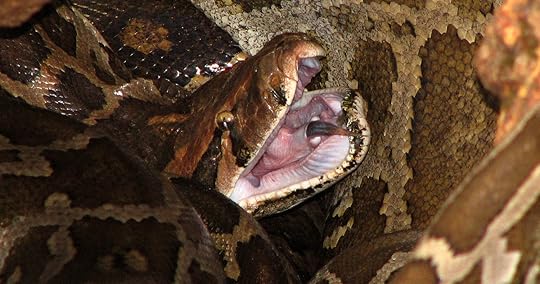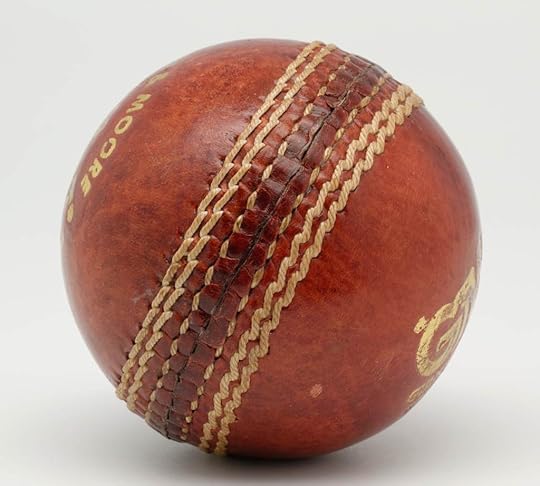Ripley Entertainment Inc.'s Blog, page 61
October 17, 2022
CARTOON 10-17-2022
October 16, 2022
CARTOON 10-16-2022
October 15, 2022
CARTOON 10-15-2022
October 14, 2022
Just a Number: Group of Skydivers Over Age 80 Break Record
Featured in Ripley's Believe It or Not!

A group of eight skydivers lept into the Central Florida skies to prove age really is just a number by breaking a world record for the largest formation of jumpers over the age of 80!
Blue skies were smiling at Jim Culhane, Cliff Davis, Scotty Gallan, Walt Green, Paul Hinen, SkyHuminsky, Woody McKay, and Ted Williams as they jumped out of a plane and into the record books during a 3-day event sponsored by the International Skydiving Hall of Fame Celebration.
While the feat helped them beat the previous record of a formation of six people, the group is full of seasoned skydivers from the Jumpers Over Eighty Society (JOES), many of whom have “made significant contributions to the modern sport of skydiving over the years,” said Davis.
View this post on Instagram
A post shared by Dean Nordstedt (@deannordstedt)
“We are all proud to represent our sport with a demonstration that illustrates how the skills and expertise of our team is timeless and always evolving,” he added.
The historic event took place at Skydive DeLand, an epicenter for sky-high hijinks located just north of Orlando.
Videos and photos of the epic jump are in the process of being evaluated by Guinness World Records.
By Meghan Yani, contributor for Ripleys.com
EXPLORE THE ODD IN PERSON! Discover hundreds of strange and unusual artifacts and get hands-on with unbelievable interactives when you visit a Ripley’s Odditorium!Source: Just a Number: Group of Skydivers Over Age 80 Break Record
CARTOON 10-14-2022
October 13, 2022
Why Do Witches Ride Brooms?
Featured in Ripley's Believe It or Not!

Witches are common stars of all manner of media, from books to TV shows and from movies to Halloween costumes. The thing about these varied takes on witches, however, is just how much they all have in common: long robes, pointed hats, magic wands, and general malevolence. Then, of course, there’s the traditional witchy mode of transport: the broomstick.
Broom flight has long been associated with witches. In the Harry Potter series, witches and wizards even play the now-iconic fictional sport of Quidditch on brooms. Presuming that magical peoples of legend could enchant other objects and use them to fly, though, why would they select broomsticks in particular? The reason, it seems, is that broomsticks have similar pagan roots to witches themselves!
The Prosecution of WitchesHistorically, witches have been a source of much fear and prosecution. During the infamous Salem Witch Trials of 1692, for instance, colonial Massachusetts was rocked by a wave of vitriol, misguided terror, and hatred that saw 19 people condemned and hanged. Their indeterminate crimes were pardoned and money given to their families in 1711.
What exactly had the “witches” done wrong? In an age of superstition, fear, and suspicion, surely nothing. The fact was, those accused of witchcraft didn’t flit around on broomsticks in long, flowing robes. The threat, supposedly, was more subtle and insidious than that.
According to the BBC, Anne Boleyn was suspected of witchcraft because she allegedly “charmed” the infamous King Henry VIII using magic. Henry, presumably, simply lost interest in their relationship when no heir was produced, but it was a convenient excuse to have.

Via Wikimedia Commons.
In the absence of a witchcraft charge, it’s safe to assume that Boleyn was never seen flying through the skies on a broomstick. The connection between seemingly malevolent magic and brooms, however, seems to lead back to a certain ritual of paganism, along with various other activities witches supposedly indulged in.
Needless to say, the development of human homes, houses, and habitats would have been rather closely followed by the development of ways to keep them clean. The trusty broomstick has long been a tool in our arsenal when it comes to doing just that, and as History reports, the word broom (a plant that was often used for sweeping) was derived from the word besom. A “besom,” over the years, has been defined as an unclean, unpleasant or rude woman or girl in Scotland, and all of these traits, along with broomsticks, remain associated with witches in popular culture today.
How Far Back Does the Link to Witches and Brooms Go?Though we continue to use brooms to sweep our homes today, many of them are not of the traditional wooden design. Witches, however, have seemingly been flying on the latter models for a very long time. In 1451, Martin Le Franc published Le Champion des Dames.
The book depicts two women who don’t appear to need any such champion: The topmost figure rides upon what is clearly a broomstick, while the women below is mounted on a length of wood, though not one that can really be definitively seen as a broomstick.

Martin Le Franc’s “Le Champion des Dames,” via Wikimedia Commons
This appears to be the earliest known depiction of women riding on broomsticks, but the mystical and magical connotations are less clear. All that can be said for certain, with this particular image in mind, is that the riders are mounted in positions that will be very familiar to those who have any knowledge of witch-related literature. Here, though, the implication of the broomsticks in particular may have more of a sexual origin.
Symbolic MeaningsWitches were not necessarily magical, but their broomsticks appear to have been highly symbolic as both phallic images and signs of “proper” behavior, which is to say, keeping the home clean in the eyes of the patriarchy.
In this way, the broom highlighted what a woman supposedly should be, and what she shouldn’t. Embracing their sexuality in such a repressed world would absolutely have been controversial. Prior to the twentieth century, artistic interpretations of witches showed them nude, which would surely have heightened some of these links too.
There’s more to unpack about the association of broomsticks with witchcraft. Paganism has deep associations with magic and the natural world, and it seems that those mysterious broomsticks tie in with that very nicely.
Pagan Rituals?The Discoverie of Witchcraft, a 1584 book from Reginald Scot, leaves the reader in no doubt as to the crucial elements of certain pagan rituals: “At these magicall assemblies, the witches never faile to danse,” Scot writes, adding that “whiles they sing and danse, everie one hath a broome in hir hand, and holdeth it up aloft.”
This, it seems, was a ritual to bolster fertility, which saw brooms and other such objects led through crops (which would hopefully develop bountifully as a result).
Accusations FlyScot seems to list many of the most iconic elements of witchhood: they are “magical,” they brandish brooms, and they are strictly referred to as women. This is not to say, though, that there were not male witches. Indeed, it’s reported that the first witch to confess to flying on a broomstick (a confession offered under duress, naturally) was a French priest named Guillaume Edelin, in 1453.
During Edelin’s time, there was an awful lot of suspicion and fear around those who didn’t behave as they were expected to. It was a time of both superstition and religion, and branding those who didn’t conform as dissidents or witches was a convenient way to discredit them. This notion, it seems, led to several of the iconic characteristics of witches, and brooms and broom flight are just one of them.
By Chris Littlechild, contributor for Ripleys.com
EXPLORE THE ODD IN PERSON! Discover hundreds of strange and unusual artifacts and get hands-on with unbelievable interactives when you visit a Ripley’s Odditorium!Source: Why Do Witches Ride Brooms?
CARTOON 10-13-2022
October 12, 2022
Terrifying: Burmese Python Could Swallow 5-Gallon Bucket
Featured in Ripley's Believe It or Not!

When it comes to invasive species, Burmese pythons are the stuff of nightmares, weighing upwards of 200 pounds and stretching up to 18 feet. They kill by coiling their bodies around prey and squeezing it to death, and then they start swallowing. These insatiable eaters can devour a wide variety of animals, including large mammals like white-tailed deer. And they begin downing meals sometimes even before their victims have stopped breathing.
But how much can Burmese pythons ultimately gobble? That’s a question a group of researchers at the University of Cincinnati recently decided to explore. Their findings add another layer of horror to the Burmese python’s modus operandi. Here’s everything you need to know about one of the world’s most gluttonous predators.
Measuring Gaping MawsHow do you measure the swallowing capacity of a Burmese python? That’s a question that biologists at the University of Cincinnati decided to explore with shocking conclusions. They recently published their findings in the journal of Integrative Organismal Biology, explaining how Burmese pythons manage to bite off far more than they can chew.
To get to the bottom of the jaw-gape conundrum, they got their hands on the most enormous, euthanized pythons in the state of Florida, and then they started stuffing them — literally. The secret behind the snake’s brutal survival mechanism lies in the construction of its jaws and entire bodies. And contrary to popular belief, it’s not simply a matter of dislocating their lower jaw.
Instead, Burmese pythons practice the equivalent of reptilian yoga. You see, snakes’ lower jaws are connected to their craniums via elastic pieces of connective tissue. These tissues stretch to incredible widths in some cases, permitting snakes to swallow super-sized prey.

CT scans showing the landmarks (dots) used for morphological measurements. Credit: Bruce C Jayne, Abigail L Bamberger, Douglas R Mader, Ian A Bartoszek
Stretched to the LimitBruce Jayne, the lead author of the study, explains, “The key thing about snakes is that they don’t dislocate any joints during the process of swallowing their prey. But the joints they do have between their bones are extremely mobile. Unlike [human] jaws, which are one piece, in snakes, it’s two pieces. And in between those two pieces are connective tissues, skin, and muscles.”
In essence, the Burmese python’s entire body is a highly flexible and mobile structure designed for maximum swallowing power. The more flexible the connective tissue, the more an individual reptile can down. That said, this “superpower” comes with a severe downside. When snakes gobble more than they can handle, it can kill them.
Nevertheless, caution is thrown to the wind when big animals cross the snakes’ paths, showing off their ability to stretch gaping jaws to unbelievable widths. Of course, studying this capacity was no simple task. You could say it stretched the biologists’ research abilities, too.
Engulfing Prey an Inch at a TimeBruce Jayne and his crew employed 3D-printed probes in various sizes to measure individual pythons’ mouth sizes. These probes varied in size from small to larger than the diameter of a five-gallon plastic bucket.

Range of sizes used to determine maximal gape. The inset shows brown treesnakes, whereas the Burmese pythons are in the background. Credit: Bruce C Jayne, Abigail L Bamberger, Douglas R Mader, Ian A Bartoszek
Of the euthanized snakes they compiled for the study, only one could stretch its mouth to engulf the probe roughly the size of the bucket measuring about 9 inches in diameter. For context, you could put your head inside it. In life, this specimen weighed roughly 130 pounds and came in at 14 feet long — a truly sobering thought for Floridians living with these critters’ presence in their state.
While you might think this is a real monster bite, Jayne believes this is only the beginning regarding the capabilities of Burmese pythons. After all, their research was limited to snakes euthanized as a part of Florida’s invasive species program. But Jayne has a sneaking suspicion much bigger serpents are still out there, swallowing truly gargantuan prey.
By Engrid Barnett, contributor for Ripleys.com
EXPLORE THE ODD IN PERSON! Discover hundreds of strange and unusual artifacts and get hands-on with unbelievable interactives when you visit a Ripley’s Odditorium!Source: Terrifying: Burmese Python Could Swallow 5-Gallon Bucket
A Cricket Ball May Have Killed This British Prince
Featured in Ripley's Believe It or Not!

Here at Ripley’s, we’re no stranger to the fact that people can sometimes die tragic, unfortunate, utterly absurd deaths. For instance, the Ancient Greek poet and writer Aeschylus reportedly died when a tortoise landed on his head after falling from a passing eagle’s talons. This is almost certainly a fanciful tale, but the unfortunate Aeschylus has gone in history for this absurd demise regardless.
The plausibility of tortoise projectiles notwithstanding, it’s a sad fact that, however careful and health-conscious we are, sometimes we’re just in the wrong place at the wrong time. When this happens, terribly unlucky deaths can result. They can also, depending upon who the victim is, change the course of history when they occur.
One such incident had a profound impact on the British royal family. According to another famous story, a Georgian heir to the throne was killed after being struck by a cricket ball.
The Unfortunate Frederick, Prince of WalesThe title of Prince of Wales, today, is given to the heir to the British throne. It is currently held by Prince William, King Charles III’s eldest son (who was himself Prince of Wales until the death of his mother, Queen Elizabeth II). The title has been used in this context since 1301,when Edward I named his son as such. This first Prince of Wales would go on to become Edward II.
Princes of Wales, by dint of being heirs, are tremendously important members of the royal family. An heir apparent is one who will always be first in line to the throne, regardless of any royal births that may occur. However, they won’t necessarily go on to become king, should they perish before getting this opportunity. This is exactly what happened to Frederick, Prince of Wales, the unfortunate victim of a cricket ball (or so it’s believed).

Frederick Prince of Wales Via Wikimedia Commons.
British King George II and his Queen, Caroline, had an eldest son, the aforementioned Frederick. His parents seemed not to care for him at all. In fact, they reportedly loathed him. Queen Caroline is quoted as saying of their son, “I wish the ground would open this moment and sink the monster to the lowest hole in hell.”
Though he would be his father’s heir, the king and queen appeared outwardly hateful towards him. The young man, for his part, never lived to succeed George II as the king; Frederick was reportedly just 43 when he died on March 20, 1751. The circumstances of his death are as curious and peculiar as they are tragic.
Where Does the Cricket Ball Come In?The popular story is that Frederick was struck by a cricket ball and died. There’s a suggestion, here, that he simply keeled over on the spot on impact and died immediately. This would have been quite the unlikely tragedy, which would account for how well-known the story is, but it seems that there was a lot more to it than that.
One account of the tale states that the Prince, a sportsman who enjoyed various games, was struck by a ball (it may have been a cricket or a true tennis ball, it seems). It wasn’t an instant death, reportedly, but one that would cause an injury that would result in the prince’s untimely passing. In this version of the events, the blow was powerful enough to cause an abscess to form.
Abscesses are linked to chills, and it seems that Frederick succumbed to exactly that in the cold weather. While chills can be ultimately rather mild, the prince’s condition was reportedly aggravated and he contracted pleurisy. An infection, such as from an abscess, can lead to pleurisy.
For Richard Cavendish of History Today, however, the cause of Frederick’s death was the bursting of the abscess, just as he has seemed to have been rallying from his illness. Cavendish writes that doctors of the time suggested it had been pneumonia that killed the prince, though his post mortem reached the conclusion that he had suffocated after the abscess ruptured.

Credit: Marie-Lan Nguyen Via Wikimedia Commons (CC BY-SA 2.5)
Indirectly, then, a sudden, unfortunate and surely very painful encounter with a cricket ball (or, potentially, a tennis ball), does appear to have killed the prince!
Other versions of the tale are rather less extraordinary, however. The BBC’s “The First Georgians: The German Kings Who Made Britain” recounts that Frederick had a chill, and that he was killed by a pulmonary embolism. The television show reportedly claimed that the cricket ball tale was a fanciful one. All the same, though, a chill certainly seems to have had a devastating effect on the heir’s health. Again, an injury caused by such a wound could very well have led to this outcome. There’s even more to the story, though.
What Really Killed the Prince?Frederick was known to be a cultured man, taking great interest in the arts as well as sports. Though his parents seemed not to have cared for him at all, he appeared to ingratiate himself with people, perhaps as a result of his enthusiasm for such games. It appears to have been this very enthusiasm that doomed him, though. The Earl of Macclesfield presented another intriguing take on the matter of his death, writing that the Prince died as a result of an abscess “under the sternum bone… having been occasioned by a fall playing Prisoners Base some years before.”
Prisoner’s Base is a slightly more elaborate take on tag, in which it seems that players who are caught by the opposing team are imprisoned. Frederick certainly wouldn’t have been the first youthful victim of an accident after a fall while playing tag, but this is another potentially crucial part of the puzzle.
Perhaps a strike from a cricket ball did aggravate a wound Frederick sustained while playing a game in his younger days. Perhaps it was a true tennis ball, and he was still ailing from the wound when the bitter weather sapped his strength further. It may even be that there was no sports-related injury at all. Opinions on exactly what caused Frederick’s death differ, and have continued to do so over time. We may never know what truly killed the unfortunate man, and how many factors contributed to his death.
What is for sure, however, is that Frederick’s eldest son became George III at twelve years old, on his grandfather’s death. The young king lived to the age of 81, though his ailing health left his son to serve as regent in the latter years of his reign.
By Chris Littlechild, contributor for Ripleys.com
EXPLORE THE ODD IN PERSON! Discover hundreds of strange and unusual artifacts and get hands-on with unbelievable interactives when you visit a Ripley’s Odditorium!CARTOON 10-12-2022
Ripley Entertainment Inc.'s Blog
- Ripley Entertainment Inc.'s profile
- 52 followers








